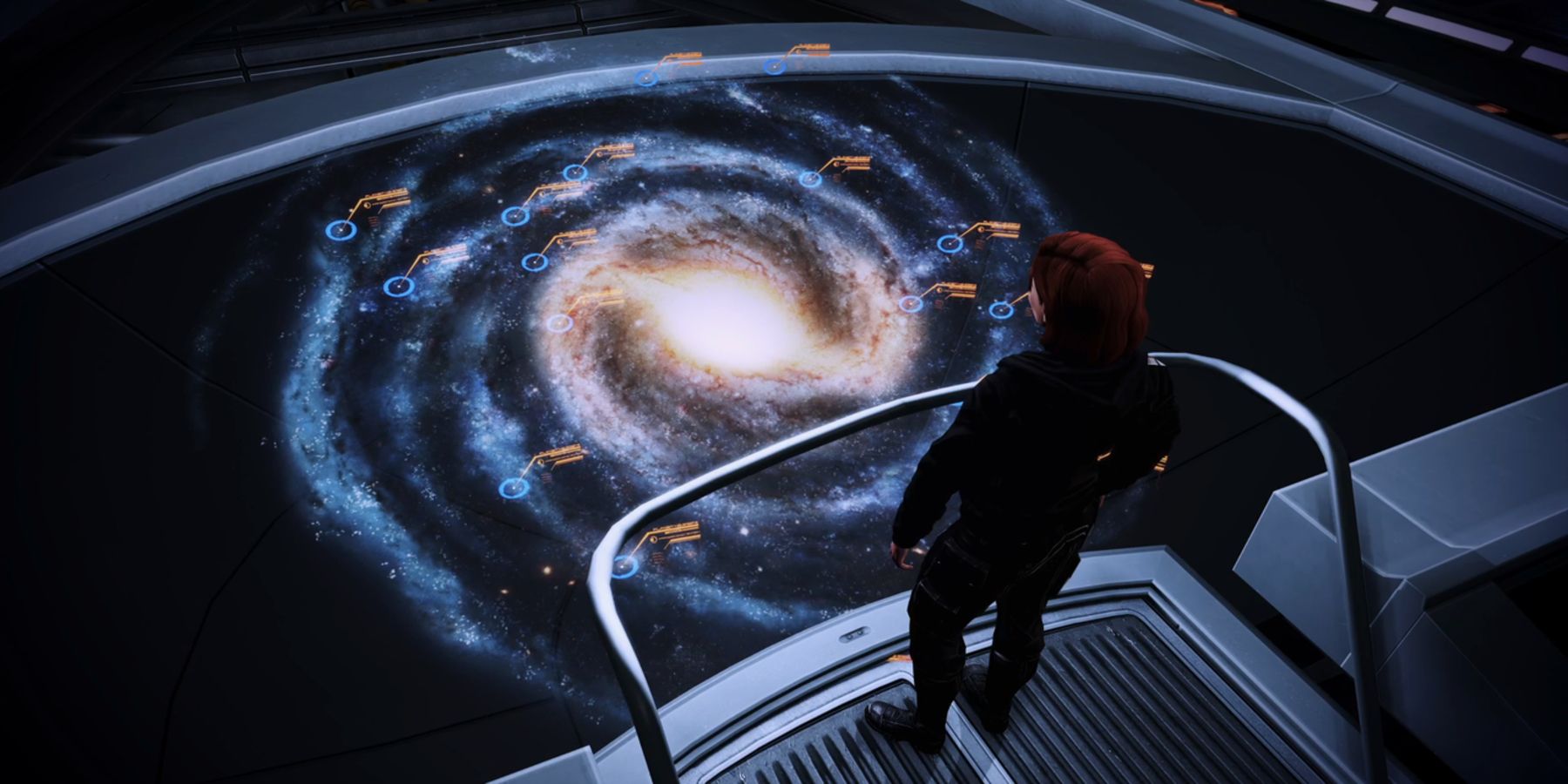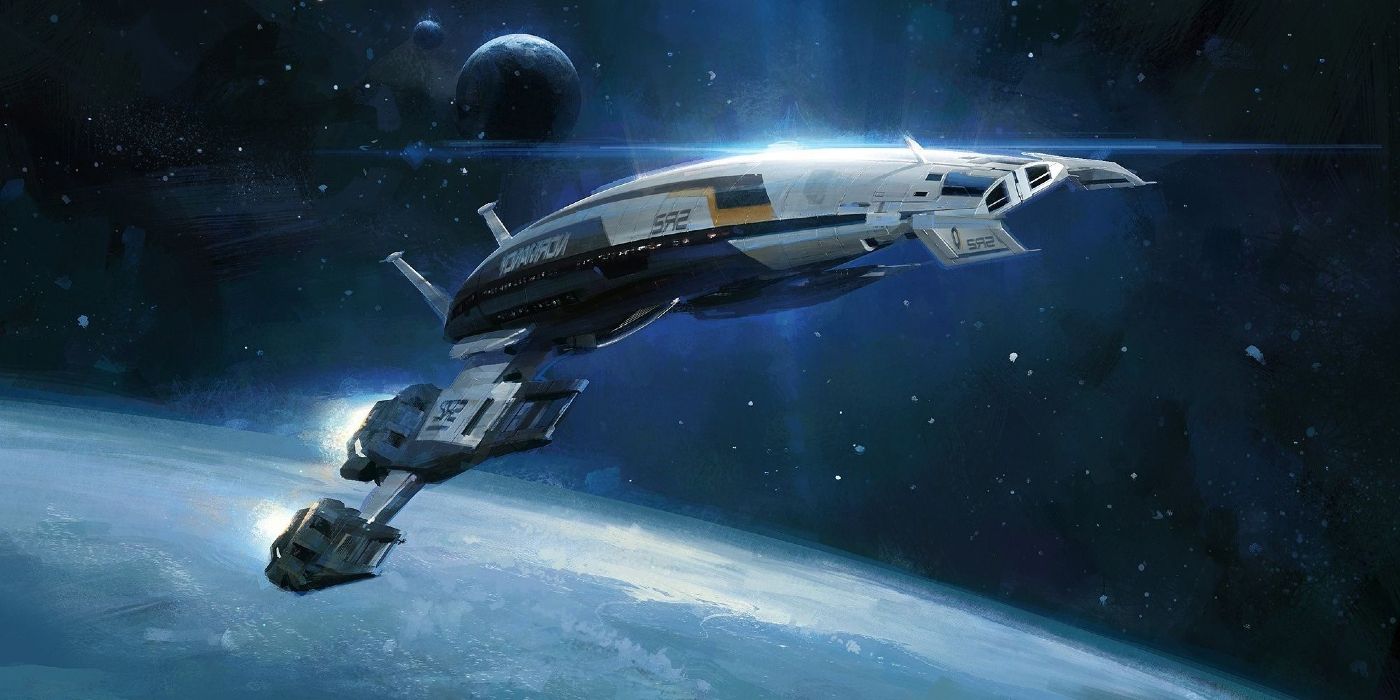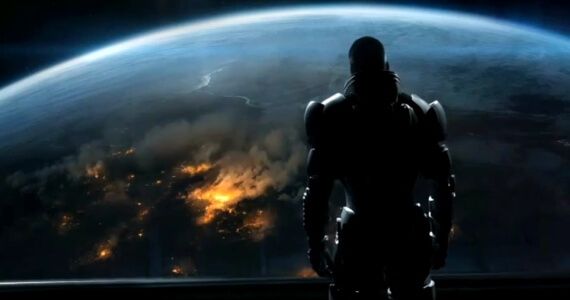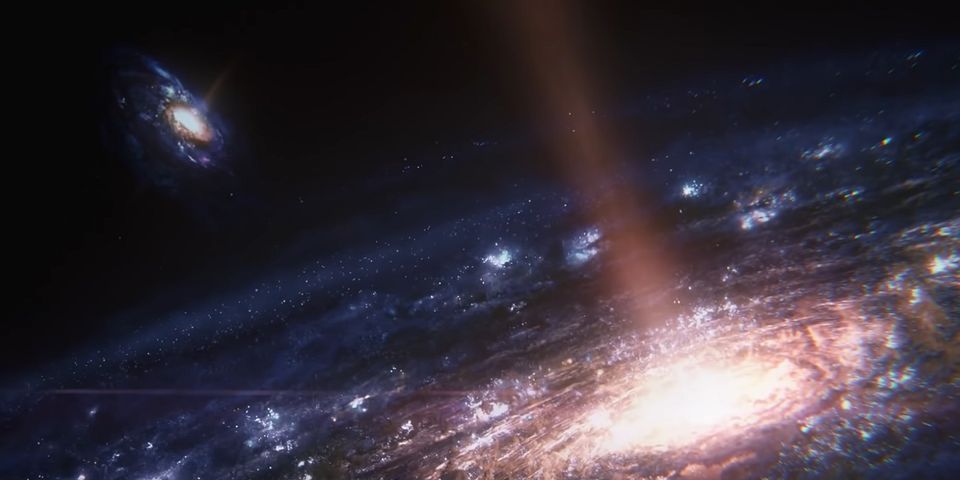With the exception of the most recent entry into the franchise, the Mass Effect games take place in the Milky Way galaxy. They follow Commander Shepard and their crewmates as they battle a variety of enemies throughout the original trilogy of games, and finally take on the Reapers in a last bid to save the galaxy once again. Created by Casey Hudson, Drew Karpyshyn, and Preston Watamaniuk, the Mass Effect series encompasses multiple games, spin-offs, books, comics, and an animated film, with a multimedia reach almost as vast as its setting.
Successful world-building is key if a game wants to be able to progress beyond the limits of its first entry, and the Mass Effect series is a perfect example of this. Granted, Mass Effect: Andromeda abandoned a lot of the elements of the first three games and moved the action to another galaxy entirely, but the majority of the Mass Effect story takes place in humanity's own home galaxy – the Milky Way. BioWare successfully harnesses the familiar and the not-so-familiar within this setting to craft the vibrant world of the games, using a combination of the real and the fabricated.
Introducing Mass Effect's Milky Way
The first three games in the Mass Effect series, which are now playable in all their remastered glory in the Mass Effect: Legendary Edition, all take place in the Milky Way galaxy. After the discovery of alien technology within one of the moons of Pluto, humans discovered new ways to travel and explore space, which led to an even great discovery – other sentient species. Despite a rocky start to inter-species relations, humans soon became part of the wider galactic community and started expanding human colonies to more and more planets as their influence and development increased.
The Milky Way in the Mass Effect games is home to many alien species, including a few fan favorites like the militaristic turians, the nomadic quarians, and the powerful asari. Throughout the trilogy, players explore the galaxy and numerous planets as well as the Citadel – the nexus of the galactic community and the capital of the Citadel Council. Using an interconnected network of mass relays, exploring the galaxy in Shepard's ship means that players get a good look at the version of the Milky Way that BioWare has constructed, and with the alien worlds, rich lore, and diverse species that inhabit it, there is plenty that feels new and exciting in comparison to our own version of the galaxy.
What Players Will Find Familiar
Although humans have an understanding of many elements of our galaxy, it is fair to say that an overwhelmingly large proportion of it is still undocumented and undiscovered. As such, BioWare may have been able to borrow aspects from real life, but many of the elements of Mass Effect's Milky Way have been fabricated either from scratch or with nods to existing objects or locations. Still, there are still lots of things that players might find familiar, even if they are alongside an overwhelming list of things that are not.
The names might have been slightly adapted for the game, but players may recognize a little place called the Sol system in the Local Cluster when they access the galaxy map on the Normandy. This is home to humanity's own tiny pocket of space, with planets like Mercury, Venus, and of course Earth. Although players aren't able to actually land on or explore any of these familiar planets until Mass Effect 3 with the Earth and Mars-based missions, it's still fun to see something that they can easily recognize represented in-game.
In order to better fit the narrative and the scope of the games, the majority of planets, systems, and galactic aspects were created specifically for Mass Effect. It's easy to see why when estimations for the number of planets in the Milky Way could be as high as 100 billion – way too many for BioWare to trawl through in order to base their own galactic assets on real ones. But there are still some realistic elements, such as a whole host of nebulae designed after developers spent time poring over images from the Hubble Space Telescope and other sources. Side-by-side comparisons reveal just how much effort developers put into recreating these recognizable formations, such as the Serpent Nebula (the Snake Nebula in real life), the Horsehead Nebula, and the (Engraved) Hourglass Nebula.
The Key Differences From Our Milky Way
While some aspects of Mass Effect's Milky Way have their roots in factual parts of our own galaxy, there are of course plenty of examples that don't. The existence of aliens in the wider galaxy is not something that can currently be proved or disproved, so that aspect will have to go unmentioned. But another element that is not in dispute is the inclusion of plenty of locations, systems, and planets that BioWare has specifically constructed for the Mass Effect series.
For some of the more obvious differences, players only need to look closer to home. The Mass Effect games take place towards the end of the 22nd century, and as such Earth and its surrounding planets have undergone a lot of changes from what they are today in our own galaxy. Charon, the largest of the five satellites that orbit the dwarf planet Pluto, was an ice-encrusted mass relay that enabled faster-than-light travel – an element in Mass Effect's Milky Way that is safe to assume is different from our own.
Other less-than-realistic aspects include elements of the Mass Effect galaxy that are more story-specific. For example, the Krogan DMZ (or Krogan Demilitarized Zone). This is a star cluster relatively near to humanity's own Local Cluster and contains the home planet of the hyper-combative race of Krogans called Tuchanka. The Krogans previously had a larger contingent of planets under their purview, but after the devastating events of the Rachni Wars, the Krogan Rebellion, and the subsequent spread of the Genophage, the Krogans were forced into smaller areas of relatively peaceful habitation. Other species homeworlds that feature more prominently in the final game of the trilogy, Mass Effect 3, include Palaven, Thessia, and Rannoch – planets with a historical and cultural significance all created for Mass Effect's Milky Way.
Along with the variety of alien races, array of different planets, and adapted elements of our own Milky Way, BioWare created a new and vast galaxy full of interesting and in-depth elements for players to explore. Whether it's scouring the surface of a planet for bases and objects in the Mako, scanning and launching probes to collect resources, or having boots on the ground for action-packed missions, there's plenty for gamers to do and see, even if the majority of it may seem unfamiliar.
Mass Effect: Legendary Edition is available now on PC, PS4, and Xbox One.




